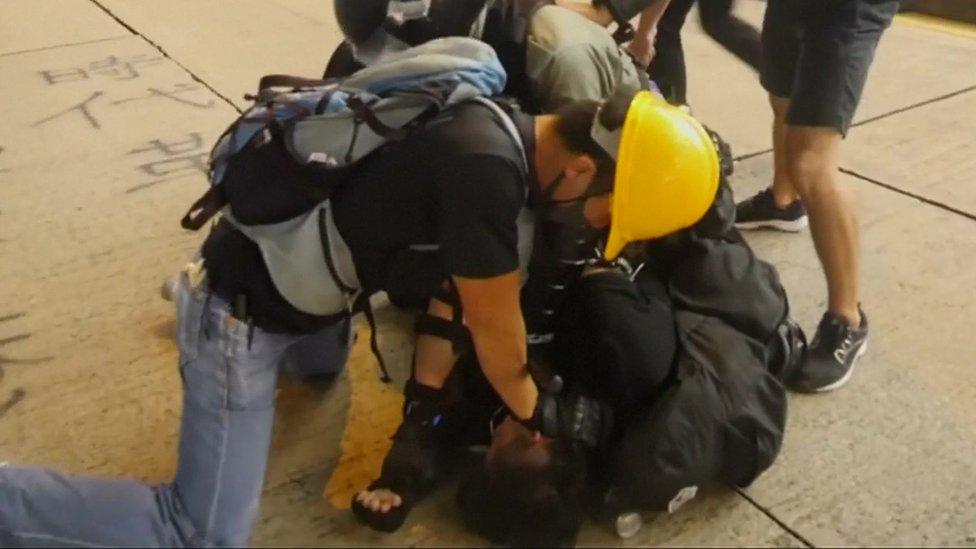Hong Kong: Timeline of extradition protests
- Published
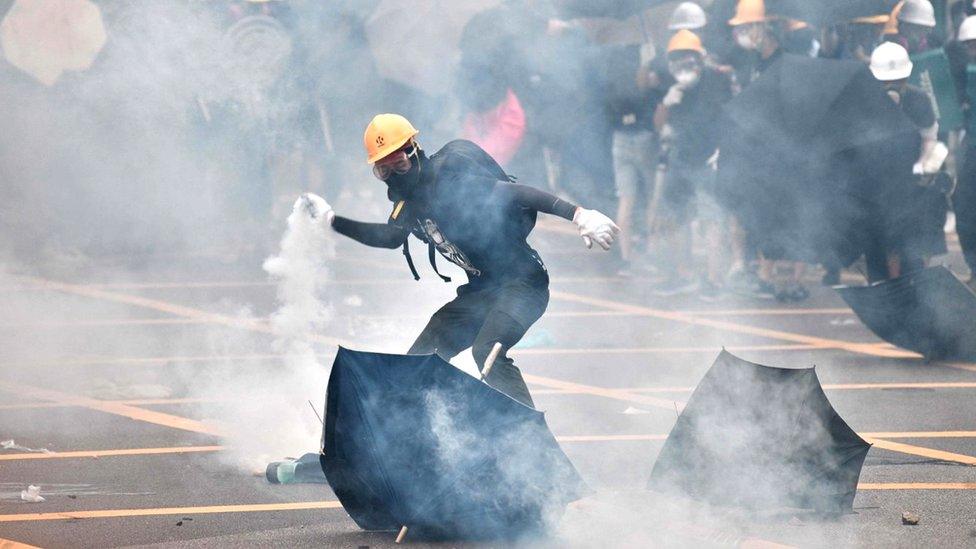
The protests have often escalated into violent clashes
Since June, Hong Kong has been rocked by protests that show no sign of dying down.
What started as demonstrations against an extradition bill have since taken on a much wider scope and are now demanding full democratic rights for Hong Kongers.
On 3 April, Hong Kong's government introduced plans for changes to legislation that would allow for criminal suspects to potentially be extradited to China.
Critics warned the bill could undermine Hong Kong's legal freedoms and might be used to intimidate or silence dissidents.
This is a timeline of what happened next and how the movement evolved.
The first big protests
On 9 June, an estimated one million people marched to the government headquarters to show they were against the proposed bill.
Critics say the plan will erode the city's judicial independence
It was largely a peaceful rally, though some small skirmishes broke out.
Three days later, on 12 June, a fresh demonstration took place at which police fired tear gas and rubber bullets.
Police use tear gas on protesters
The stand-off developed into the worst violence Hong Kong had seen in decades.
Carrie Lam delays the bill
Another three days later, on 15 June, Hong Kong leader Carrie Lam issued a dramatic reversal, saying she would indefinitely delay the extradition bill.
Carrie Lam expressed 'deep sorrow' over extradition law controversy
Despite this, an estimated two million people took to the streets the following day, 16 June, demanding the bill be withdrawn completely and calling for Ms Lam's resignation.
Protesters took to the street despite Carrie Lam's announcement
Over the next days, anger grew towards the police and on 21 June, protesters blockaded police headquarters for 15 hours.
They now demanded that protesters who were arrested during previous protests should be exonerated.

More links on Hong Kong protests
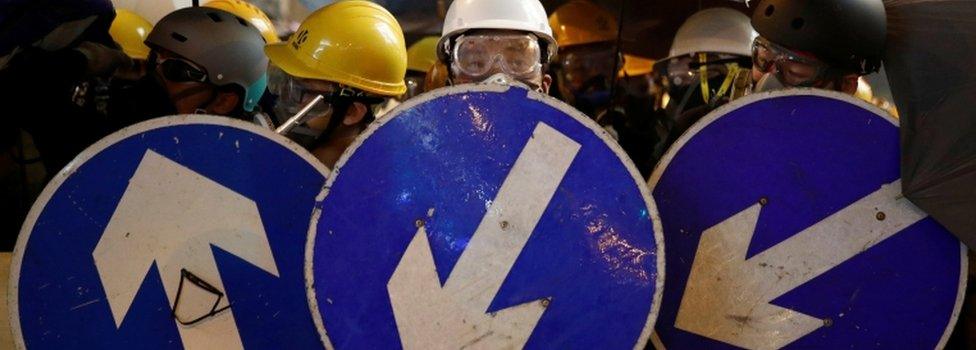
Summary of the protests in 100 and 500 words
All the context you need on the protests
The background to the protests in video
More on Hong Kong's history

Protesters storm parliament
On 1 July, the anniversary of Hong Kong's handover from the UK to China, the Legislative Council (LegCo) building was stormed by protesters who sprayed graffiti on the walls, displayed the colonial-era flag and defaced Hong Kong's regional emblem.
Protesters describe their ransacking of Hong Kong’s Legislative Council one month on
One week later, on 7 July, tens of thousands marched in Kowloon - an area popular with mainland tourists - in a bid to explain their concerns. Until this point the protests had received little if any coverage in state-run mainland media.
On 9 July, Carrie Lam reiterated that the extradition bill was "dead" urging protesters to stop their actions. She still refrained from fully withdrawing the bill.
On 21 July, protesters defaced China's Liaison Office in Hong Kong.
That same night, mobs of men wearing white-shirts attack commuters in Yuen Long underground station - near mainland China- in a new escalation of violence.
Some suspected these were members of gangs called triads and pointed out that police arrived very late to stop them.
A large group of masked men in white T-shirts stormed Yuen Long station
On 27 July, thousands demonstrated in Yuen Long condemning the station attack. Police responded by firing tear gas at the unauthorised protests.
On 2 August, even civil servants - supposed to be politically neutral - joined demonstrations in their thousands.
It's not just about extradition any more
By this point it had become clear the protests had evolved well beyond the initial demand of the withdrawal of the extradition bill.
Some protesters said it was now about what they saw as the erosion of the special freedoms Hong Kong has.
A former British colony and now part of China, Hong Kong is run under a "one country, two systems" agreement that guarantees it a level of autonomy, its own judiciary and a separate legal system from the mainland.
But there was also a lot of anger towards how the police had handled the situation, and their use of force.
Violent clashes become the norm
On 3 August, protests took place for the ninth consecutive weekend.
Police again fired tear gas, rubber bullets and bean bag rounds at protesters, something many had now come to expect. By this time protesters were wearing masks and protective gear at every demonstration.
Protests take place in Hong Kong for the ninth weekend - for and against the authorities
On 5 August, yet another city-wide strike was held, bringing services across Hong Kong to a standstill. Carrie Lam gave her first media address in two weeks, saying Hong Kong was "on the verge of a very dangerous situation".
Stephen McDonell's gas mask face visor was smashed by a projectile
On 6 August, China warned the protesters not to "play with fire," not to "underestimate the firm resolve [of] the central government" and not to "mistake restraint for weakness".
It was one of the strongest warnings Beijing had issued over the protests.

Airport shut down by protesters
Protests moved into a 10th week without showing signs of dying down.
On 11 August, police stormed enclosed railway stations, firing tear gas at protesters, leading yet again to dramatic scenes of confrontation.
Violence erupts in HK train stations
During the violence that Sunday, one protester was injured in her eye - it remains unclear how - becoming a symbol of the protest movement.
The next day, on 12 August, protesters gathered at the airport, leading to hundreds of flights being cancelled.
The protest again saw violent clashes between the activists and police and China condemned them as "behaviour that is close to terrorism" - in a sign of Beijing's rhetoric hardening.
How Hong Kong got trapped in a cycle of violence
As the airport standoff was under way, Hong Kong police admitted deploying officers disguised as anti-government protesters during the unrest the previous day.
Some officers disguised themselves as "different characters", a spokesman said, adding that the "decoy operation" had targeted "extreme violent rioters".
The targeting of suspected under cover officers at the airport by protesters, one of whom turned out to be a reporter, tarnished the image of the protesters.
The first peaceful weekend...
One week after the airport clashes, a new rally took place on 18 August.
Amid reports of Chinese police and military gathering across the border in Shenzhen, tensions were high.
But the protest remained peaceful, and for the first time in weeks, there were no major clashes between police and activists.
... but not for long
Violence resumed the following weekend, with police using tear gas and water cannon against protesters, who returned fire with projectiles, including bricks and petrol bombs.
Hong Kong police fired a gunshot and used water cannon during Sunday's protests
For the first time in the unrest police fired a live round.
Several days later a number of prominent pro-democracy activists and lawmakers were arrested by police in Hong Kong.
Another weekend of worsening violence followed, with police accused of brutality on the city metro and activists closing roads to the airport, a major transport hub.
Finally, the bill is withdrawn
On 4 September Hong Kong's leader Carrie Lam announced she would withdraw the highly controversial extradition bill which had started the protests.
Ms Lam announced four steps to help ease tensions - footage courtesy of ICABLE NEWS
She also unveiled other measures that appeared to be designed to soothe unrest, but her opponents said it was too little, too late.
What the protesters want now
The movement is largely leaderless and not everyone has the same end goals. Over the weeks, new demands have been added.
By this point, here is what protesters still want:
The withdrawal of the "riot" description used about the 12 June protests
An amnesty for all arrested protesters
An independent inquiry into alleged police brutality
Universal suffrage in elections for Hong Kong's chief executive (the territory's leader), and Legislative Council
Some are still calling for the resignation of Carrie Lam, whom they view as a puppet of Beijing.
- Published17 August 2019

- Published18 August 2019
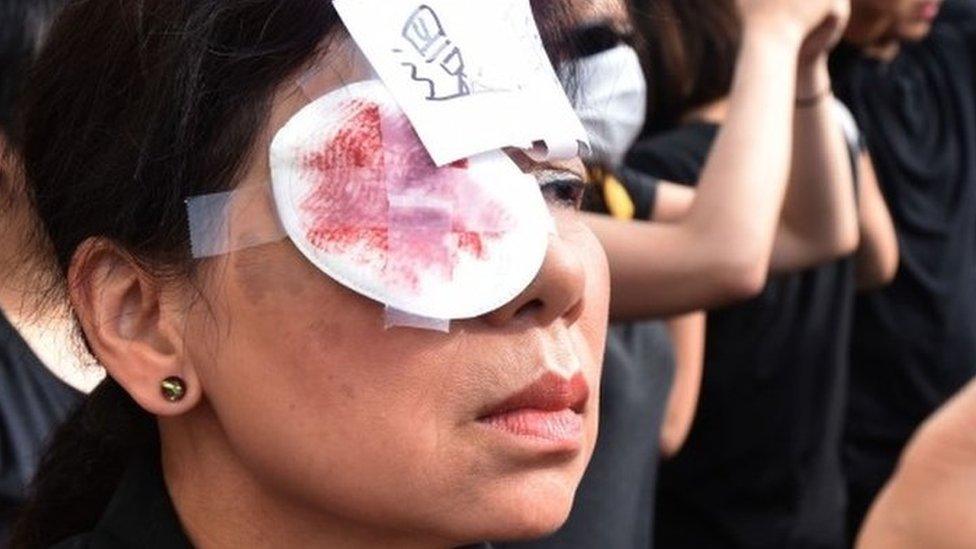
- Published14 August 2019
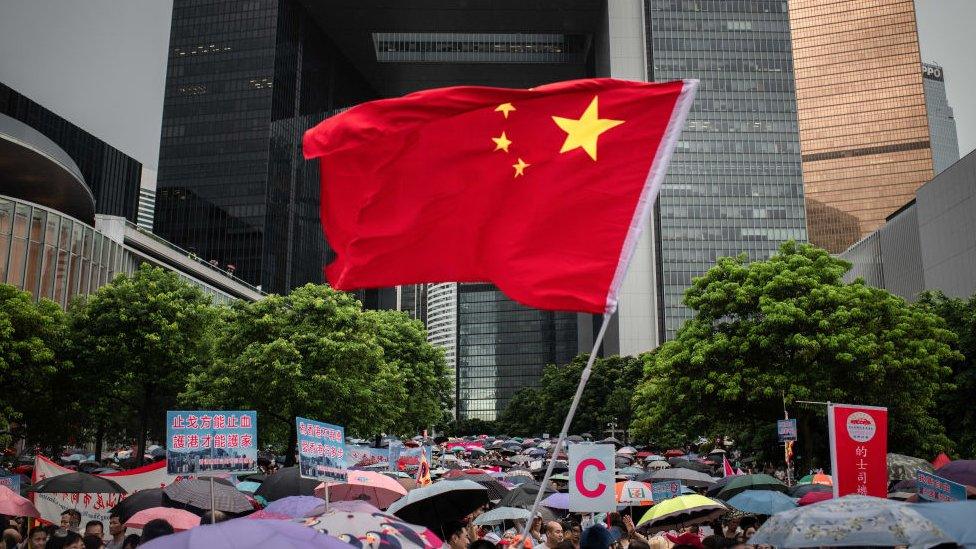
- Published28 November 2019
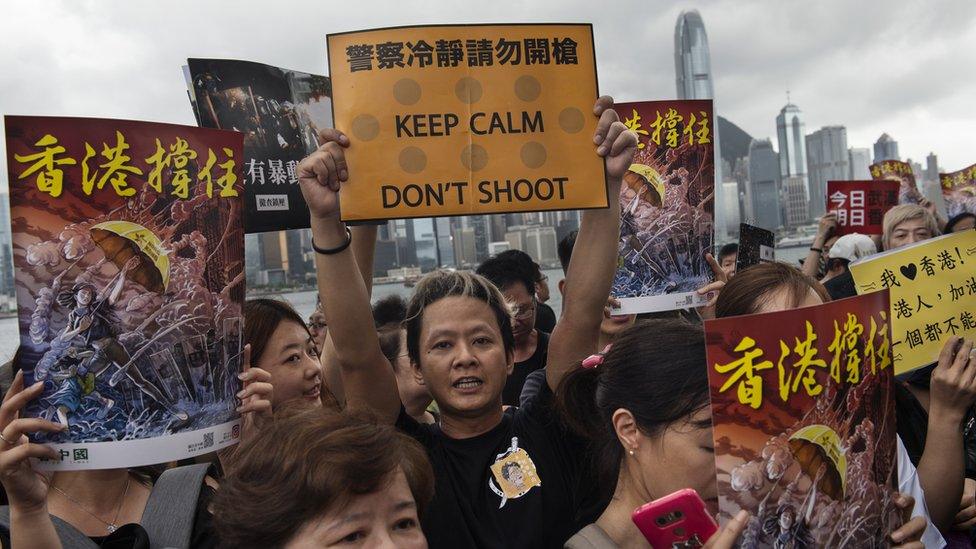
- Published13 August 2019
